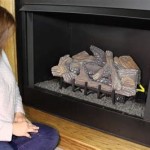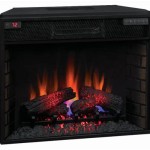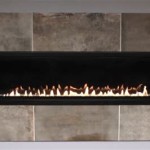Ethanol Indoor Fireplaces: A Comprehensive Guide
Ethanol indoor fireplaces have gained popularity as a modern and relatively clean-burning alternative to traditional wood-burning fireplaces. These fireplaces utilize liquid ethanol fuel to produce a flame, offering a visually appealing ambiance without the need for chimneys, vents, or gas lines. This article aims to provide a comprehensive overview of ethanol fireplaces, covering their mechanics, benefits, safety considerations, and maintenance requirements.
The rise in popularity of ethanol fireplaces is largely attributed to their ease of installation and operation. Unlike traditional fireplaces, they require minimal preparation and can be placed in various locations within a home, apartment, or even outdoor patio. This versatility has made them a desirable option for homeowners seeking to add warmth and aesthetic appeal without the complexities associated with conventional fireplace systems.
The following sections will provide a detailed examination of different aspects of ethanol fireplaces, guiding potential buyers and users toward a better understanding of this increasingly common heating and decorative appliance.
Understanding the Mechanics of Ethanol Fireplaces
At the core of an ethanol fireplace is a burner or reservoir that holds the liquid ethanol fuel. This fuel, typically denatured ethanol, is a biofuel derived from plant-based sources such as corn or sugarcane. The process begins when the fuel is ignited within the burner, producing a controlled flame. The flame size and intensity can often be adjusted depending on the design of the burner and the fireplace model.
The combustion of ethanol in these fireplaces is relatively clean compared to wood-burning fireplaces. The primary byproducts of combustion are carbon dioxide (CO2) and water vapor (H2O). While CO2 is a greenhouse gas, the amount produced by an ethanol fireplace is generally considered to be lower than that of a traditional wood-burning fireplace or even a gas fireplace. Furthermore, the absence of smoke, ash, and soot eliminates the need for complex ventilation systems.
Ethanol fireplaces come in a variety of designs, ranging from wall-mounted units and freestanding stoves to tabletop models and inserts for existing fireplace structures. The design of the fireplace influences the aesthetics and functionality, as well as the fuel capacity and burn time. The materials used in construction also vary, commonly including stainless steel, glass, and powder-coated metals, contributing to both durability and visual appeal.
The burners themselves can also vary significantly. Some use simple, open containers for the fuel, while others employ more sophisticated designs with adjustable flame controls and safety features like spill-proof mechanisms. Understanding the type of burner and its features is crucial for selecting a fireplace that meets specific needs and safety standards.
The Advantages of Choosing an Ethanol Fireplace
One of the primary advantages of ethanol fireplaces is their ease of installation. Because they do not require a chimney, vent, or gas line, they can be installed virtually anywhere in a home or building. This eliminates the need for costly and disruptive construction work, making them a convenient option for renovations or additions. Portable models can also be easily moved from room to room, providing flexible heating and ambiance.
Another significant benefit is the relatively clean-burning nature of ethanol fuel. Unlike traditional wood-burning fireplaces, ethanol fireplaces produce minimal smoke, soot, and ash. This reduces the need for cleaning and maintenance and improves indoor air quality. The absence of harmful emissions also contributes to a healthier living environment, particularly for individuals with respiratory sensitivities.
Ethanol fireplaces also offer a visually appealing flame that can enhance the ambiance of any space. The dancing flames create a warm and inviting atmosphere, making them a popular choice for living rooms, dining rooms, and bedrooms. The variety of designs available ensures that there is an ethanol fireplace to complement any décor style, from contemporary to traditional.
Furthermore, ethanol fireplaces can be a more environmentally friendly option compared to some other types of fireplaces. While ethanol combustion does produce carbon dioxide, the fuel itself is often derived from renewable resources, reducing the overall carbon footprint. Additionally, the absence of smoke and pollutants minimizes the impact on the surrounding environment.
Finally, the operational costs of an ethanol fireplace can be relatively predictable. The price of ethanol fuel can fluctuate, but it is generally easy to estimate the cost per hour of operation based on the fuel consumption rate of the fireplace. This allows users to budget for their heating and ambiance needs effectively.
Safety Considerations and Best Practices
While ethanol fireplaces offer numerous benefits, it is crucial to prioritize safety when using them. Ethanol is a flammable liquid, and improper handling can lead to accidents and injuries. Following safety guidelines and implementing best practices is essential for ensuring the safe operation of these fireplaces.
One of the most important safety considerations is the proper ventilation of the room in which the fireplace is located. While ethanol combustion produces less CO2 than wood or gas fireplaces, it is still important to ensure adequate airflow to prevent the buildup of carbon dioxide. Opening a window or door slightly can help to maintain a safe and comfortable environment.
Never refuel an ethanol fireplace while it is burning or still hot. Allow the fireplace to cool completely before adding more fuel. Spilling ethanol can create a fire hazard, so it is essential to handle the fuel carefully and use a funnel or other appropriate tool to prevent spills. Also, store ethanol fuel in a cool, dry place away from heat sources and open flames.
It is also crucial to keep flammable materials away from the fireplace. Curtains, furniture, and other combustible items should be placed a safe distance from the flames to prevent accidental ignition. Supervise children and pets closely when the fireplace is in use, and never leave it unattended. Consider using a fireplace screen or guard to provide an additional layer of protection.
Regular maintenance is also essential for ensuring the safe operation of an ethanol fireplace. Cleaning the burner and other components can help to prevent the buildup of residue and ensure proper combustion. Inspect the fireplace regularly for any signs of damage or wear, and replace any worn or damaged parts promptly. Finally, ensure the fireplace is placed on a stable and level surface to prevent tipping or spillage.
Choosing an ethanol fireplace that adheres to established safety standards is also essential. Look for models that are certified by recognized testing organizations such as UL or CSA. These certifications indicate that the fireplace has been tested and meets specific safety requirements. Reading and understanding the manufacturer's instructions and safety guidelines is also critical. These documents provide important information about the safe operation and maintenance of the fireplace.
Carbon monoxide detectors are not typically considered necessary for ethanol fireplaces due to the low levels of carbon monoxide produced. However, having a smoke detector in the room is still recommended as a general safety precaution. Consider consulting with a qualified professional for advice on the appropriate safety measures for your specific situation.
Maintenance and Fuel Considerations
Maintaining an ethanol fireplace is generally straightforward, contributing to its ease of use. Regular cleaning is vital to ensure optimal performance and safety. The frequency of cleaning depends on the usage and the specific model, but a general rule of thumb is to clean the burner and surrounding areas every few weeks. This involves removing any accumulated residue and wiping down the surfaces with a damp cloth.
The type of fuel used in an ethanol fireplace is critical. Denatured ethanol is the recommended fuel, and it is essential to use a high-quality fuel specifically designed for ethanol fireplaces. Avoid using fuels that contain additives or perfumes, as these can produce undesirable odors or residues. The purity of the ethanol affects the quality of the flame and the cleanliness of the combustion process.
Fuel consumption rates vary depending on the size and design of the fireplace, as well as the flame setting. Understanding the fuel consumption rate of your specific model allows you to estimate the operating costs and plan accordingly. Some fireplaces have adjustable flame controls that allow you to regulate the fuel consumption and heat output. These controls can also help to extend the burn time of a single fuel fill.
Storage of ethanol fuel requires careful attention. The fuel should be stored in a tightly sealed container in a cool, dry place away from heat sources and open flames. It is also important to keep the fuel out of reach of children and pets. Proper storage minimizes the risk of spills or accidental ignition.
When refilling the fireplace, always make sure the burner is completely cool. Use a funnel to prevent spills and avoid overfilling the burner. Overfilling can lead to fuel spills and potential fire hazards. If any fuel is spilled, clean it up immediately with a damp cloth.
Regular inspection of the fireplace for any signs of wear or damage is also an important part of maintenance. Check the burner for corrosion or cracks, and inspect the surrounding surfaces for any signs of heat damage. Replace any worn or damaged parts promptly to ensure the safe and reliable operation of the fireplace.

Indoor Ethanol Fireplaces Planikafires

Bio Ethanol Fireplace

Freestanding Bio Ethanol Fireplace Feel Stand For Indoor Use Sweden

Bioethanol Fires Wignells Wood Stoves Heaters Cookers

Indoor Ethanol Fireplaces Planikafires

Ethanol Fireplace Pros Bio Fireplaces

Ethanol Fireplace Automatic Smart Remote Controlled Afire

Are Indoor Ethanol Fireplaces Safe New Scientific Research

China Customindoor Ethanol Fireplace With Stainless Steel Burner Suppliers Manufacturers Factory Direct Whole Eosfire

Xl1200 Ethanol Burner The Longest Ecosmart Fire
Related Posts








